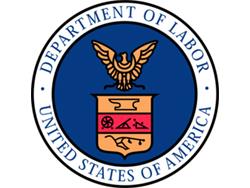DOL Issues Updated Independent Contractor Rule
San Francisco, CA, February 20, 2024-"On January 6, 2021, the U.S. Department of Labor (DOL) finalized its highly anticipated independent contractor rule” reports Littler. “The rule delivers on the DOL’s promise to simplify, clarify and harmonize the factors for determining when a worker is an independent contractor versus an employee under the Fair Labor Standards Act (FLSA). It is meant to be the sole and authoritative interpretation for this analysis. Although the rule is slated to take effect March 8, 2021, the new administration is expected to review this along with other rules adopted during the last few months by the outgoing administration.”
This is highly relevant in the flooring industry where, according to “Survey 2023: What the Retailers Think” in the July issue of Floor Focus, 75% of retailers reported that their installers are independent contractors.
“After the DOL considered nearly 1,800 comments, the final rule largely tracks what the agency originally proposed, with a few significant clarifications. The rule focuses on the concept of economic dependence as the touchstone of the economic reality test.
“The rule clarifies the relevant factors the DOL will use to determine whether workers are in business for themselves (independent contractors) or economically dependent on a putative employer for work (employees). The rule emphasizes that the proper analysis is whether a worker is dependent on a purported employer for work as opposed to whether a worker is dependent on the income received.
“The most significant changes from the original proposal responded to comments-including those by Littler’s Workplace Policy Institute, whose comments on behalf of industry the DOL thoughtfully considered and cited extensively-requesting additional examples. The DOL added 29 CFR § 795.115, which shows how the new rule applies to six additional examples.
“Until now, the DOL and most courts considered seven economic reality factors when analyzing a work relationship using the economic reality test.2 The rule clarified the seven factors by identifying two core factors based on an exhaustive analysis of decades of cases dealing with the test: (1) the nature and degree of control over the work; and (2) the worker’s opportunity for profit or loss.
“A hallmark of the new rule is that the two core factors are the primary and most important factors deserving the most weight. Three additional non-exhaustive guidepost factors can be considered, however, if the core factors are not determinative or point in different directions:
- The amount of specialized training or skill required for the work that the potential employer does not provide;
- The degree of permanence of the working relationship, focusing on the continuity and duration of the relationship and weighing toward independent contractor status if the relationship is definite in duration or sporadic; and
- Whether the work performed is “part of an integrated unit of production.”
Further information is available here.
